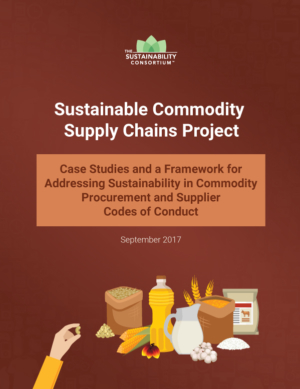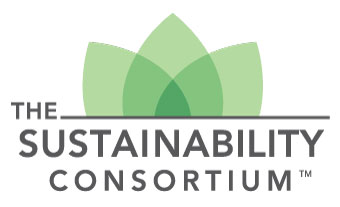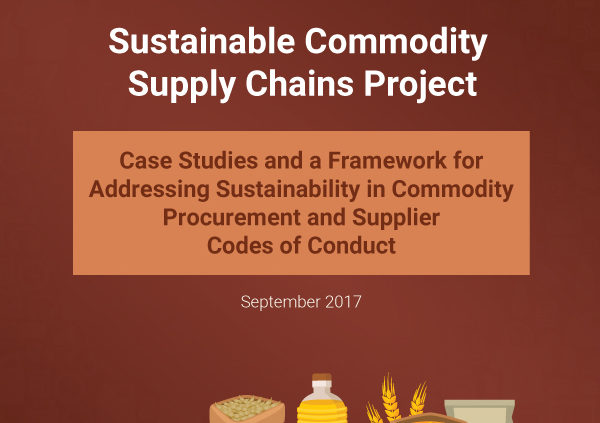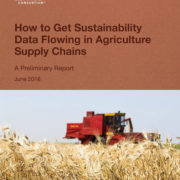Sustainable Commodity Supply Chains Project: Case Studies and a Framework for Addressing Sustainability in Commodity Procurement and Supplier Codes of Conduct

| Author(s): | [doc_author] |
| Date Published: | [doc_create_date] |
| Projects: | [projects] |
| Number of Downloads | 27635 |
| Size | 2.17 MB |
| File | Action |
|---|---|
| Sustainable Commodity Supply Chains Project Report (PDF) | Download |
The primary objective of the Sustainable Commodity Supply Chains project was to utilize
collective action to gain transparency into the sustainability attributes used to reduce
environmental and social impacts in commodity supply chains. To meet this objective, TSC
engaged in four key activities:
- Conduct case study interviews to learn how agricultural commodities are purchased
- Compare and contrast supplier codes of conduct in the agricultural sector
- Evaluate how food and agriculture companies’ supplier codes of conduct compare to their publicly stated corporate sustainability goals
- Create a sustainability framework for commodity procurement
Through the case study interviews, TSC sought to gain insight into the purchasing and data
collection landscape related to sustainability in commodity crops and to better understand the
sustainability attributes that commodity companies and food manufacturers use during their
commodity procurement process. Building on these findings, the purpose of the supplier codes of
conduct analysis was to determine the current status of how commodity procurement guidelines
are used in the agricultural sector. Additionally, the intent of the supplier codes of conduct and
corporate sustainability goals analysis was to help companies identify and address any issue
gaps between their corporate sustainability goals and supplier requirements. Lastly, the purpose
of the sustainability framework was to identify core elements and issues across supplier codes of
conduct, agricultural supplier codes of conduct, and other guidance documents companies use to
help drive consistency, streamline requests around commodity purchasing, and send consistent
messaging through commodity supply chains.





